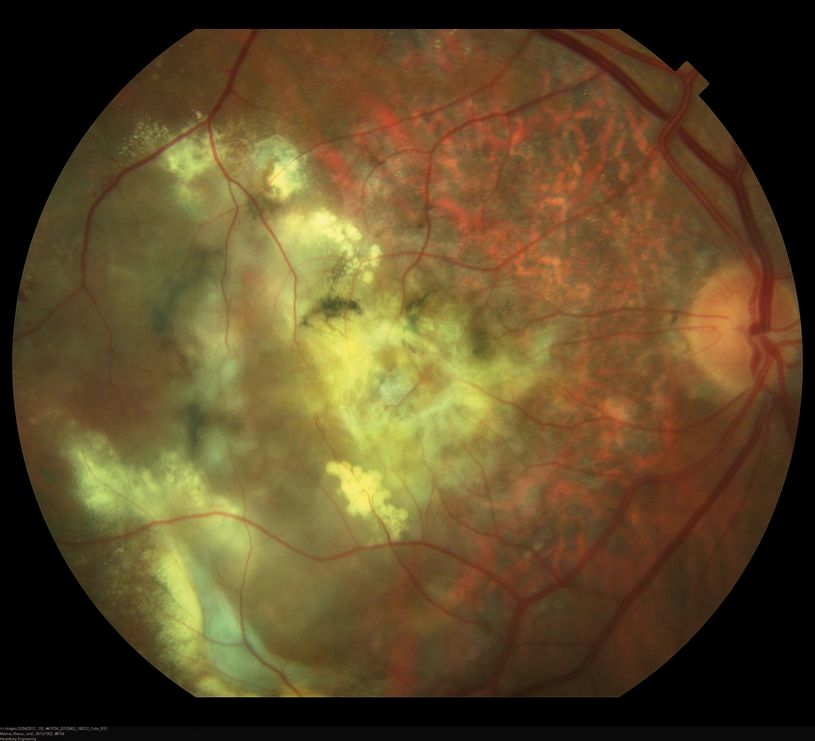Recent Study on AMD prevalence in Europe
The European EYE-RISK consortium together with the European Eye Epidemiology (E3) consortium has recently published an article on age-related macular degeneration (AMD) in the prestigious journal Ophthalmology entitled: “Prevalence of age-related macular degeneration in Europe”.
AMD is the most frequent cause of blindness in the over-50s in developed countries. It is a degenerative, chronic and progressive disease that causes vision loss by affecting the central region of the retina, the macula. AMD has two stages: early AMD, which is characterised by the appearance of drusen and changes in the retinal pigment epithelium; and late AMD, which can be divided into two subtypes in turn: geographic atrophy (GA) and choroidal neovascularisation (CNV).
This study’s aim was to determine the prevalence of early and late AMD from 1990 to 2013. This is due to the fact that disease risk profiles and treatment options have changed considerably over the years and may have affected the prevalence of the disease.
Prevalence data for AMD comes from 14 cohorts based on the population of 10 European countries, which represents a total of 42,080 study participants of over 40 years old. To harmonise the classification of the disease, the studies were adapted to the Rotterdam classification (van Leeuwen R. et al. Ophthalmology. 2003). The calculation of prevalence data for early and late AMD involved the performing of a meta-analysis of stratified random effects by age, birth cohort, geographic region and the time period of the study.
“A reduction in the prevalence of AMD was observed thanks to the treatment options that
have appeared in the past two decades”
A reduction in the prevalence of AMD and an improvement in visual acuity in CNV has been observed during the past two decades in Europe. This is probably due to increasingly healthy lifestyles and the implementation of anti-angiogenic treatment. Despite this, AMD continues to be an important public health problem among the European population as the number of people affected by the disease will rise considerably in the coming decades due to the ageing of the population.
This article holds that, although many small studies have assessed the prevalence of AMD and its relationship with decreased vision in various European countries, a clear overall vision for the continent as a whole is needed. Full epidemiological data will assist those who formulate public health policy and vision care in developing adequate planning.
Eduardo Rodríguez, MSc, a member of the BMF Research Team


